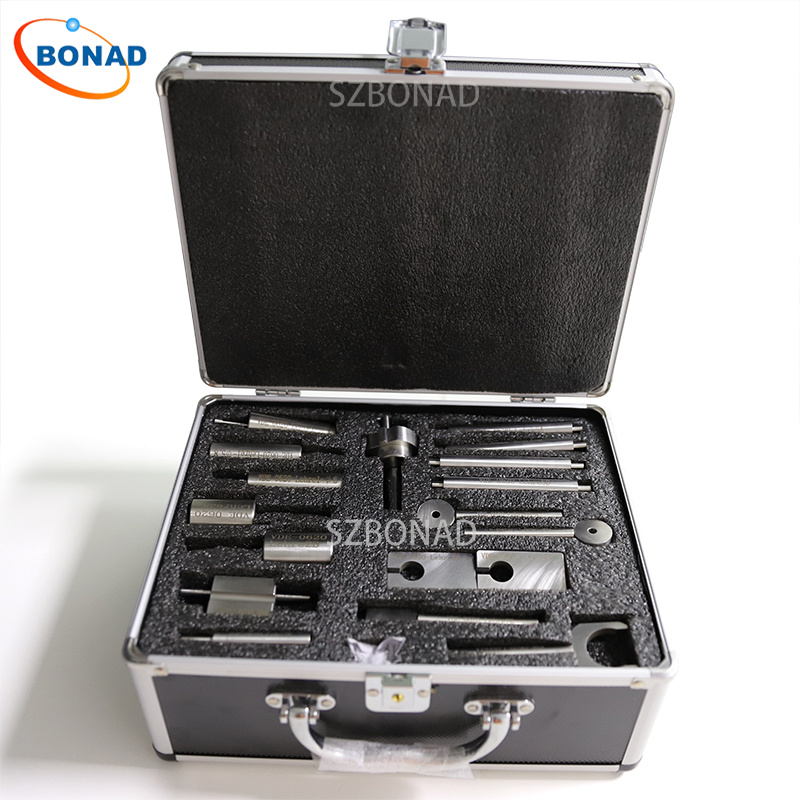1 Introduction
Regarding the energy consumption requirements for household electrical appliances, Australia has implemented MEPS, namely: the minimum energy consumption regulations. MEPS regulations require that all household and similar electrical appliances sold in Australia must meet the minimum energy consumption level. The regulations cover 12 categories of products, including: refrigerators, air conditioners, three-phase motors, fluorescent lamps, fluorescent lamp ballasts, dryers, dishwashers, etc., as well as the products to be elaborated in this article – commercial refrigeration display cabinets. The standard implemented by this product is AS17314.14. MEPS regulations aim to reduce the energy consumption of household electrical appliances sold on the market, improve consumers’ energy-saving awareness, and encourage consumers to choose more energy-efficient products.
2 Characteristics of commercial refrigeration products
In terms of use occasions, commercial refrigeration display cabinets are usually used in supermarkets, bars, and large department stores. The use environment is complex, easy to contact with the public, and there are many safety factors to consider. Household refrigeration equipment is only used at home.
From the perspective of product structure, commercial refrigeration display cabinets have a large volume and a variety of appearances, including closed refrigeration display cabinets, horizontal display cabinets, vertical display cabinets, refrigerated islands, etc. The structure of household refrigeration equipment is relatively simple.
In terms of daily power consumption, for closed commercial refrigeration equipment, the door is generally made of transparent glass or other transparent materials, and the external heat can be exchanged through heat radiation, convection, and conduction. Sometimes, fluorescent lights are also equipped to display the internal products. Customers often open and close the door to buy the products they need, which increases the number of times the door is opened and closed. The above reasons cause commercial refrigeration equipment to consume much more power than household refrigeration equipment.
3 AS17314.14 General Testing Method
If you want to test the minimum energy consumption of commercial refrigeration equipment, you must know two parameters, namely the total power consumption (TEC) and the total display area (TDA). The relationship between them is shown in formula (1).
MEPS = TEC / TDA (1)
3.1 Calculation method of TDA
Commercial refrigeration equipment consumes more energy than household refrigeration equipment, so the standard uses the daily power consumption per unit display area to determine the power consumption. The energy consumption of commercial refrigeration equipment is defined as: the power consumption per unit display area, abbreviated as (TEC/TDA), in kWh/day/square meter. It not only takes into account the daily power consumption of the product, but also takes into account the power consumption per unit display area, which is very different from the domestic testing standards.
Definition of TDA: The total visible commodity storage area, which is the multiplication of the horizontal and vertical dimensions of the protruding part of the visible food, in m2. For the case where the food can be directly seen with glass, the light transmittance Tg is taken into account.
Specific parameters are shown in the table below
Glass category Tg value
Single-layer anti-reflective glass 98%
Single-layer glass 90%
Double-layer glass or two-layer single-layer glass 81%
Triple-layer glass without coating 73%
Special glass with reflective or heated surface. See ISO9050 for values
TDA calculation formula: (Ho×Loh)+(Hg×Tgh×Lgh)+(Vo×Lov)+(Vg×Tgv×Lgv)
Where H=length of horizontal protrusion, unit m
V=length of vertical protrusion, unit m
o=opening area
g=glass area
Tgh=light transmittance in horizontal direction
Tgv=light transmittance in vertical direction
L=refrigeration box length, unit m
Loh=horizontal opening size
Lov=vertical opening size
Lgh=horizontal glass size
Lgv=vertical glass size
3.2 TEC calculation method
The apparatus is placed in the laboratory according to AS1731.4, and the ambient temperature is controlled according to the climate type of the apparatus. For energy consumption tests, the standard requires testing at an ambient temperature of climate type 3.
Laboratory climate type:
Climate type classification
Dry bulb temperature
℃ Relative humidity
% Dew point temperature
℃ Moisture content
g/kg
0 20 50 9.3 7.3
1 16 80 12.6 9.1
2 22 65 15.2 10.8
3 25 60 16.7 12
4 30 55 20.0 14.8
5 40 40 23.9 18.8
6 27 70 21 15.8
7 35 75 30 27.3
M package temperature classification:
Classification The highest temperature of the hottest M package is equal to or lower than
℃ The lowest temperature of the coldest M package is equal to or higher than
℃ The lowest temperature of the hottest M package is equal to or lower than
℃
L1 -15 NA -18
L2 -12 NA -18
L3 -12 NA -15
M1 +5 -1 NA
M2 +7 -1 NA
H1 +10 +1 NA
H2 +10 -1 NA
S Special Classification
Note: NA means no specific requirements.
Classification of appliances:
The classification of appliances can be determined based on the climate type of the environment and the climate classification of the M package.
For example, a refrigerator is used in a 3-type climate type, and the temperature classification of its compartment M package is M1, so we can classify this refrigerator as 3M1.
The minimum energy consumption limits for complete refrigerated display cases are given in the table below
Form of refrigerated display case
Minimum energy consumption TEC/TDA (Kwh/day/m2)
Temperature classification of M package
M1 M2 L1 L2
IHC1 11.50 11.50 No value No value
IHC2 No value No value No value No value
IHC3 No value No value No value No value
IHC4 15.50 15.50 26.50 26.50
IHC5 No value No value No value No value
IHC6 No value No value No value No value
IVC1 37.50 28.00 No value No value
IVC2 27.00 25.50 No value No value
IVC3 No value No value No value No value
IVC4 17.00 17.50 44.00 39.00
IYC1 No value No value No value No value value
IYC2 No value No value No value No value
IYC3 No value No value No value No value
IYC4 No value No value No value No value
Note: 1. No value means no minimum energy consumption limit
2. For the form of refrigerated display cabinets, please refer to Appendix A of AS1731.14-2003.
3. For the minimum energy consumption limit of other forms of refrigerated display cabinets, please refer to Tables 2.1, 3.1 and 3.2 of AS1731.14-2003.
3.3 Preparation before test:
Before conducting the energy consumption test, the appliance should be powered on for 24 hours, or at least 4 hours of stable operation in a given climate type. M packs and filling packs are placed in accordance with 4.4 of AS1731.5-2003. Adjust the thermostat to make the room reach the specified temperature level.
Lighting system:
For appliances without night covers, any built-in lighting lamps are always on during the test.
3.4 Operation time:
After the appliance reaches a stable state, continue to operate
a) At least 12 hours, the appliance is usually closed at night
b) At least 48 hours, the appliance has a closure device, such as a glass door, etc.
c) At least 24 hours, for appliances other than a and b
Record the power consumption (TEC) of the appliance in kWh/24h. The number of compressor starts and stops and the relative operation time should be recorded.
Compare the TEC/TDA ratio with the standard value in the above table. If it is lower than the standard value, it means that the minimum energy consumption requirement is met.
4 Differences between GB/T8059 and AS1731
AS1731 is a new standard that is still relatively unfamiliar to everyone, while GB8059.1 is familiar to everyone. It is very critical for the majority of home appliance manufacturers to transform their laboratories to meet the test requirements of AS1731.
The AS1731 series and GB/T8059 are very different in general test conditions and load properties.
First, AS1731 requires that each refrigerator be placed in the laboratory as shown in Figure 1. The two side walls of the laboratory are the air outlet side and the return air side, and their function is to generate a uniform horizontal airflow in the laboratory. The direction of the airflow organization simulates the air flow direction in the actual process. Figure (I) indicates the placement and size requirements of the equipment in the test room.
a represents the air flow direction, which is horizontally parallel to the opening of the equipment.
d represents the distance between the back wall and other objects (walls) when the equipment is placed according to the instructions
1 represents the experimental wall that generates horizontal airflow
2 represents the experimental wall that recovers horizontal airflow
3 represents the wall to which the equipment is placed (for equipment placed against the wall)
X=2m
B≧1m
Y≧1.5m
A≧0.8m, it is recommended that when A is greater than 1.5m, the size of A is equal to Y
C≧the height of the equipment + 0.5m (1)
The general test conditions of the GB/T8059 series are very different from those of AS1731. GB/T8059 requires that each refrigerator should be placed on a solid wooden platform painted matte black, with an open bottom to allow free air circulation. The air circulation around the refrigerator should be limited by three matte black vertical partitions surrounding the refrigerator. The direction of airflow organization in the test is not specified.
Therefore, if we test commercial refrigeration appliances, we need to add the outlet and return air walls in Figure (1). Horizontal airflow can be achieved by adding fans and outlet and return air walls.
Secondly, in terms of the requirements for test packages, the AS1731 series and the measurement package (M package) specified in the GB8059.1 standard are the same in terms of component size. However, there is a big difference in the filling package. The filling package of the GB8059.1 standard is an experimental package without a thermocouple in the center for temperature measurement, while the AS1731 requires that the filling package is made of a plastic shell with a thickness of 1mm. This plastic cannot be porous or foamed. In terms of appearance, the surface of the filling should be free of protrusions, smooth and parallel to the surface. In terms of color, it is required that its color should not be affected by the surrounding heat radiation and should be light colors, such as light pink, light blue, or light green. The filling bag should be composed of porous materials, such as natural rubber or porous sponge and water.


